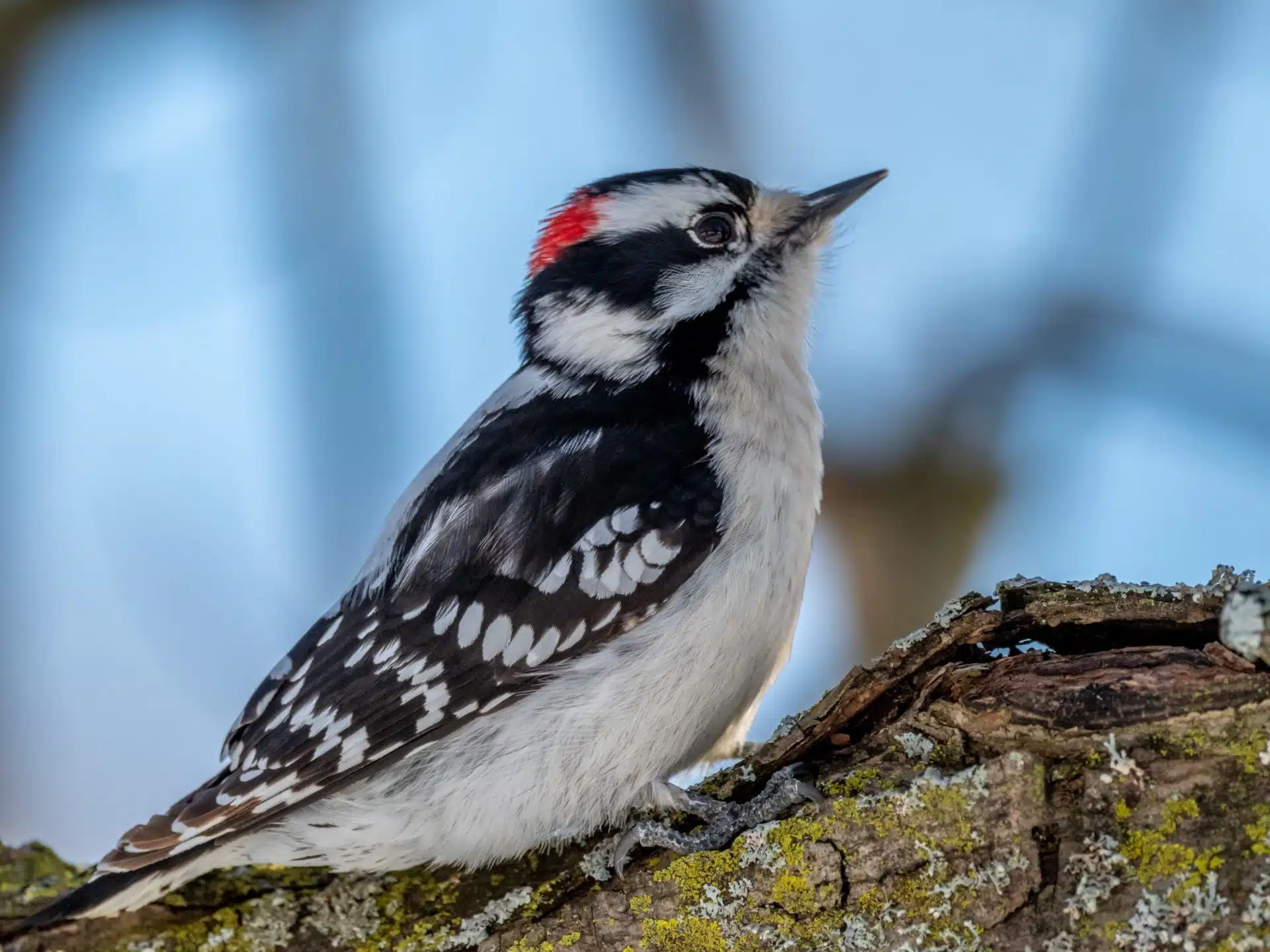Birds
Downy Woodpecker
Dryobates pubescens

Voice: Call: pik note and descending whinny Drum: a soft roll- about 17 beats a second
Downy woodpeckers are the smallest, most widespread, woodpecker in North America. In winter they often join mixed species flocks of chickadees, nuthatches, and other birds from their woodland habitat. They are a readily seen in open deciduous woodlands, suburbs and backyard feeders. Thier small size make them very adaptable. They can move around limbs, trunks and tall herbaceous plants more acrobatically than larger woodpeckers.
Downy woodpeckers eat a variety of insects including beetles, ants, caterpillars, gall wasps and small insect. Berries, acorns and other seeds/nuts consist of a quarter of their diet. They are common feeder birds eating suet, black oil sunflower and occasionally hummingbird food.
In the winter, male and female downy woodpeckers forage in different areas. Males search for food on small branches and weed stems. Females feed on larger branches and trunks.
In early spring males and females take turns drumming loudly on dead limbs in their separate territories. Once pairs are established, both sexes take one to three weeks to excavate the nest hole twelve to thirty inches above ground in dead or decaying deciduous trees. Cavity are around one to one and half inches across and six to twelve inches deep. The entrance is often camouflaged by fungus or lichen. The bottom of the cavity is widened and lined with wood chips.
In northern Ohio, female downy woodpeckers lay one set of four to five, sometimes three to six, white eggs. Both sexes incubate eggs for about twelve days. Males do most of the incubating at night. Young are tended to by both adults and leave the nest about twenty to twenty-five days after hatching. Young may follow parents around for up to three weeks after fledging.
Downy woodpeckers are very common and widespread. According to the North American Breeding Bird Survey, populations have been stable between 1966-2015. Human activity has not impacted downy woodpeckers significantly. They do well in young forest and prefer trees with smaller diameters. Partners in Flight estimates a global breeding population of 14 million.
Best Location to View: Woodland Garden, Old Valley Trail, Pierson’s Creek Loop, Thayer feeders, Woodland Trail
Color: Black upperparts; head striped; males have a small red patch on the back of head; back has a broad white stripe down the center checkered black-and-white folded wings; outer tail feathers white with a few black spots.
Range: Year-round resident from Canada / Alaska to south Florida and coast to coast
Size: 5.5-6.7"
Wingspan: 9.8-11.8"




